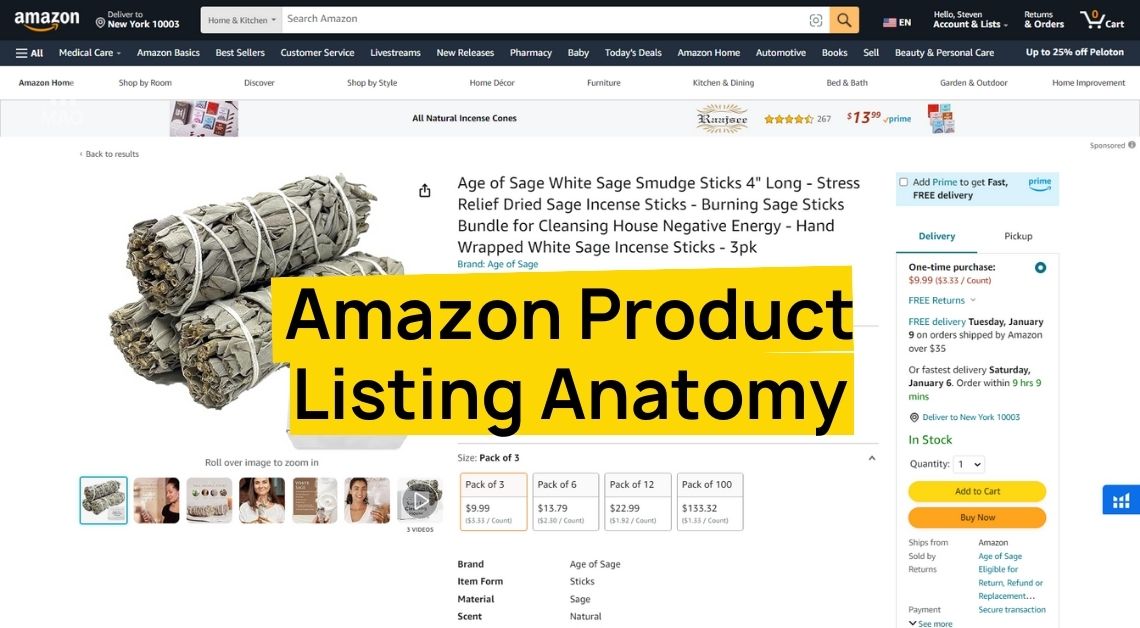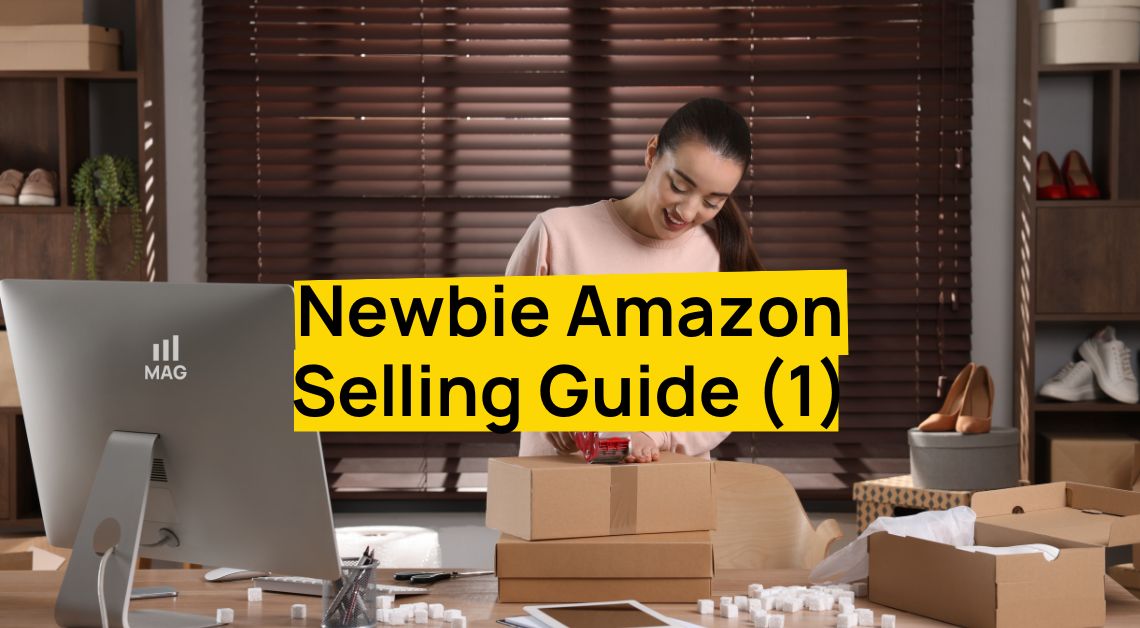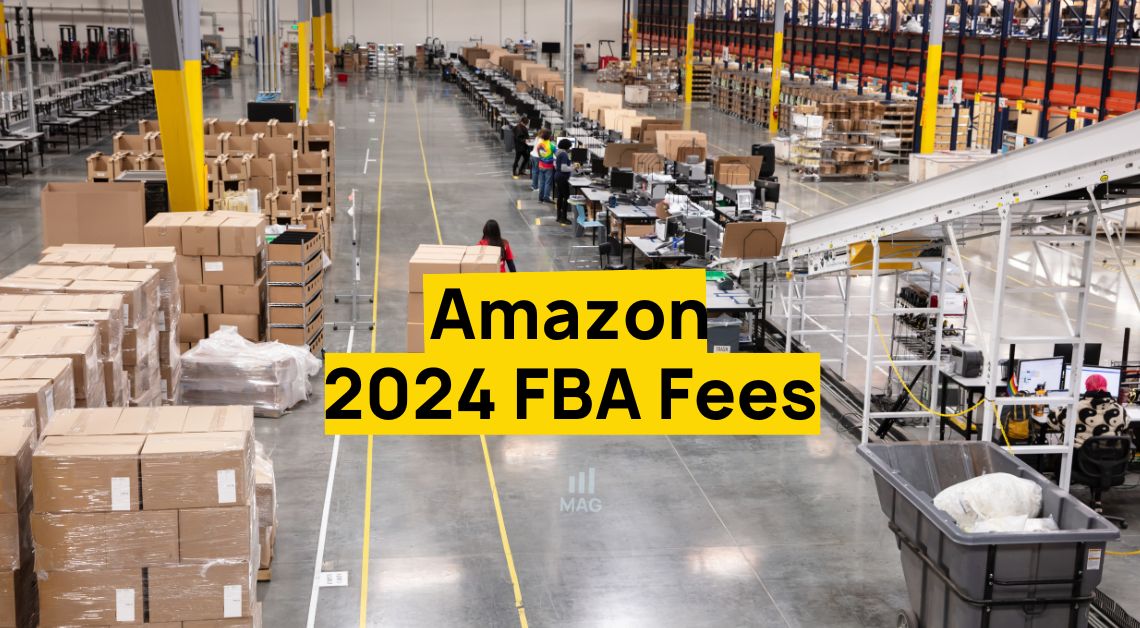“Why should I familiarize myself with Amazon FBA product eligibility?” you ask. Basically, the first step when selling on Amazon is product research. It might be an obstacle to your success if the product you chose to sell is restricted, or worse, prohibited on the marketplace.
Our Amazon Agency have prepared this blog post to provide you with a solid understanding of what you can and cannot sell on the world’s largest marketplace.
Amazon FBA Product Eligibility: Basic Requirements
To sell products on Amazon FBA (Fulfillment by Amazon), there are several basic product requirements that need to be met. These requirements ensure that the products are eligible for fulfillment and meet Amazon’s standards. Here are the key requirements:

- Product Category: Ensure that your product falls within a category that is allowed for sale on Amazon. Certain categories such as restricted categories or hazardous materials require additional approvals.
- Product Condition: Products sold on Amazon should be new or in a condition that complies with Amazon’s guidelines. Used, refurbished, or collectible items have specific condition requirements.
- Packaging: Your products must be properly packaged and labeled according to Amazon’s guidelines. This includes using appropriate packaging materials, ensuring barcodes are scannable, and meeting any specific packaging requirements for certain categories.
- UPC/EAN/ISBN: Each product should have a unique product identifier such as a Universal Product Code (UPC), European Article Number (EAN), or International Standard Book Number (ISBN). These identifiers help Amazon track and categorize products accurately.
- Product Images: High-quality product images are crucial for attracting customers. Amazon requires clear and professional images that meet their image guidelines, including specific size and resolution requirements.
- Product Listing: Create a detailed and accurate product listing that includes essential information like product titles, bullet points, product descriptions, and relevant keywords. This helps customers find your product easily and understand its features.
- Product Compliance: Ensure that your products comply with all applicable laws and regulations. This includes safety standards, labeling requirements, and any specific regulations for certain product categories.
- Size and Weight: Standard-size items have 18″ x 14″ x 8 dimensions, while oversized items have different weight thresholds and fees. Amazon’s guidelines are subject to change, and specific categories like jewelry or media may have specific restrictions.
These are some of the basic product requirements for selling on Amazon FBA. It’s important to thoroughly review Amazon’s guidelines and policies to ensure compliance and maximize your chances of success on the platform.
Amazon FBA Product Eligibility: Restricted Categories
What Are Restricted Categories In Amazon
Restricted categories on Amazon refer to specific product categories that have additional requirements, restrictions, or approval processes for sellers. These categories often involve products that may have legal or safety concerns, require specialized knowledge or certifications, or have specific guidelines for selling. Some examples of restricted categories on Amazon include:
- Beauty: Certain beauty products, such as cosmetics or skincare items, may require specific approvals or certifications before they can be sold on Amazon.
- Health & Personal Care: This category includes products like dietary supplements, over-the-counter drugs, and personal care items, which may require additional compliance with regulations and guidelines.
- Toys & Games: Some toys and games may have specific safety requirements, including certifications like the ASTM F963 standard for toy safety.
- Jewelry: Selling jewelry on Amazon may have specific requirements, such as providing certification for precious metals or gemstones.
- Automotive: Certain automotive parts and accessories may require brand approval or compliance with specific regulations, such as emissions standards.
- Collectibles: Selling collectible items, such as coins, stamps, or sports memorabilia, may have specific guidelines or approval processes.
These are just a few examples of restricted categories on Amazon. It’s important to note that the requirements and restrictions may vary within each category, and it’s essential to review Amazon’s guidelines and policies for each specific category to ensure compliance and eligibility to sell in those categories.
You can re-categorize your product and shift to a more compliant category, if needed. To know how, here’s a video from Steven Pope, founder of My Amazon Guy a Full Service Amazon Agency, to guide you.
What Do I Do If My Listing Was Removed Due To A Restricted Product Violation
If your listing has been removed on Amazon due to a restricted product violation, there are several steps you can take to address the issue:
- Review the notification: Carefully read the notification provided by Amazon regarding the removal of your listing. It should provide specific details about the violation and the steps you need to take to resolve it.
- Understand the violation: Identify the specific reason for the violation and review Amazon’s guidelines and policies for the category in question. This will help you understand why your product was deemed restricted and what actions you need to take to rectify the situation.
- Take corrective actions: Based on the violation, take the necessary steps to correct the issue. This might include obtaining the required certifications, removing prohibited content, or addressing any other compliance-related concerns.
- Communicate with Amazon: Open a case with Amazon Seller Support and provide them with any relevant information or documentation that supports your case. Explain the steps you have taken to address the violation and request a reinstatement of your listing.
- Follow up and provide documentation: Be proactive in following up with Amazon regarding your case. If you have obtained the necessary certifications or made changes to comply with their guidelines, provide the documentation or evidence to support your reinstatement request.
- Seek professional help if needed: If you are unsure about how to proceed or need additional assistance, consider consulting with an expert or an Amazon consultant who can provide guidance and support in resolving the issue.
It’s important to address the violation promptly and thoroughly to ensure compliance with Amazon’s policies. Following these steps will help you in resolving the restricted product violation and reinstating your listing on Amazon.
Amazon FBA Product Eligibility: Brand Restrictions
When it comes to Amazon FBA product eligibility, brand restrictions can be a significant factor to consider. Here are some common questions that may arise regarding brand restrictions on Amazon FBA:
- Are there any specific brands that are restricted from being sold on Amazon FBA?
– Yes, certain brands have restrictions on who can sell their products on Amazon. These restrictions can vary from brand to brand and may require sellers to meet specific criteria or obtain authorization.
- How can I find out if a brand is restricted on Amazon FBA?
– You can check if a brand is restricted by searching for it in Amazon’s Brand Registry or by contacting Amazon Seller Support. Additionally, some brands may have their own authorized seller programs or brand protection measures.
- Can I sell products from a restricted brand on Amazon FBA if I have authorization from the brand owner?
– If you have authorization from the brand owner, you may be able to sell their products on Amazon FBA. However, you may need to provide documentation or proof of authorization to Amazon for approval.
- What happens if I try to sell a restricted brand on Amazon FBA without authorization?
– Selling a restricted brand without authorization can result in your listing being removed, your account being suspended, or even legal consequences. It’s important to adhere to Amazon’s policies and obtain proper authorization before selling branded products.
- Are there any restrictions on private label brands or products I manufacture myself?
– Private label brands or products that you manufacture yourself generally do not have brand restrictions on Amazon FBA. However, you still need to ensure that your products meet Amazon’s guidelines and comply with any applicable regulations.
Amazon FBA Product Eligibility: Product Condition
What Product Conditions Are Allowed In Amazon FBA
In Amazon FBA, there are certain product conditions that are allowed. These conditions include:
- New: Products that are brand new and in their original packaging.
- Used – Like New: Products that are in excellent condition, with no signs of wear or damage. They should appear and function as if they were new.
- Used – Very Good: Products that have some minor cosmetic imperfections, but are still in good condition overall. They should function properly.
- Used – Good: Products that have noticeable signs of wear and tear, but are still in acceptable condition. They should be fully functional.
- Used – Acceptable: Products that have significant signs of wear and tear, but are still usable. They may have cosmetic issues or missing parts but should function adequately.
Common Product Condition Issues
Here are some frequently encountered product issues that might result in customer complaints. Whether you handle your own orders or utilize FBA, taking a proactive approach to identifying and resolving these problems will guarantee a favorable customer experience and prevent potential repercussions.
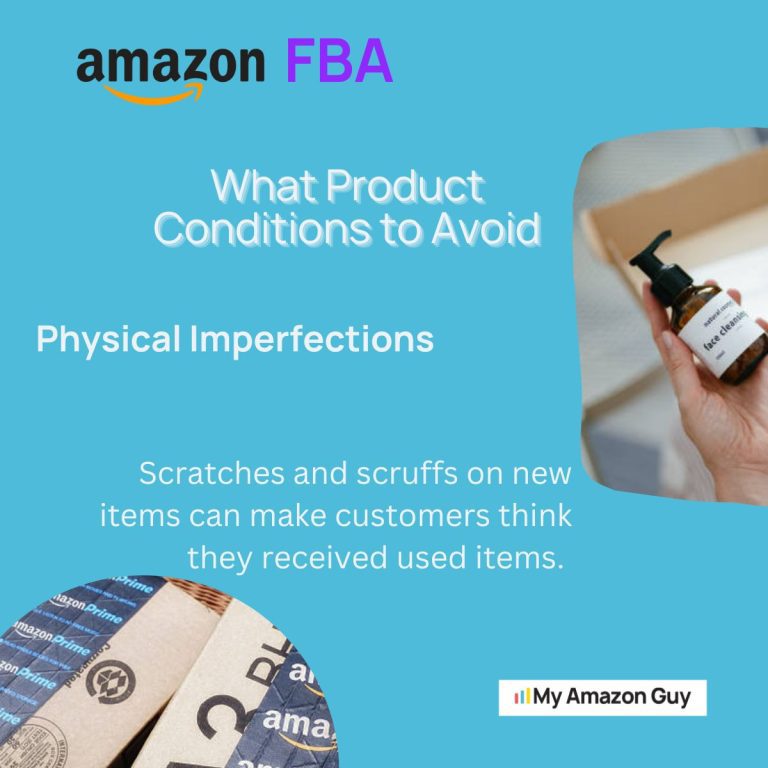
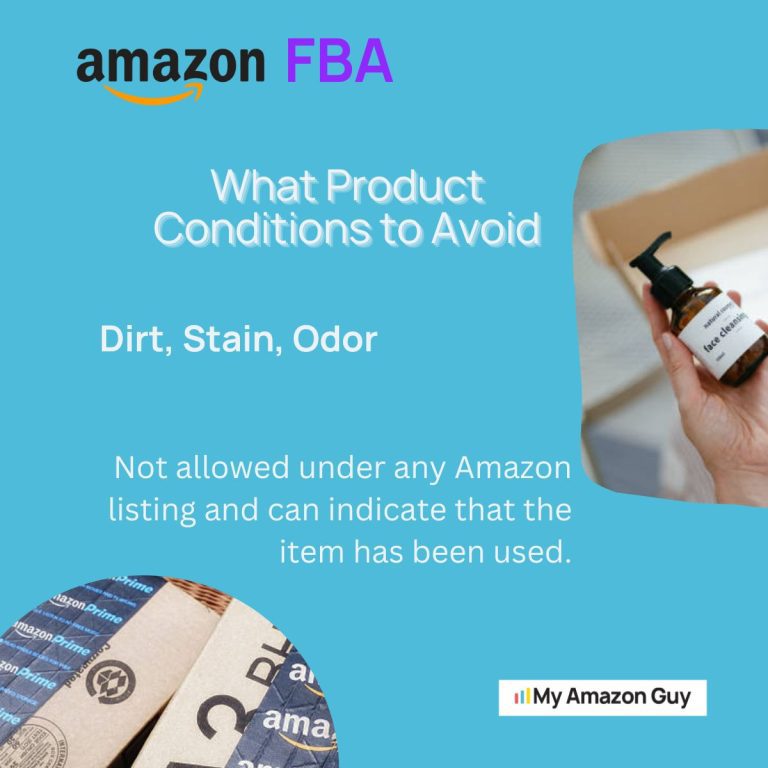
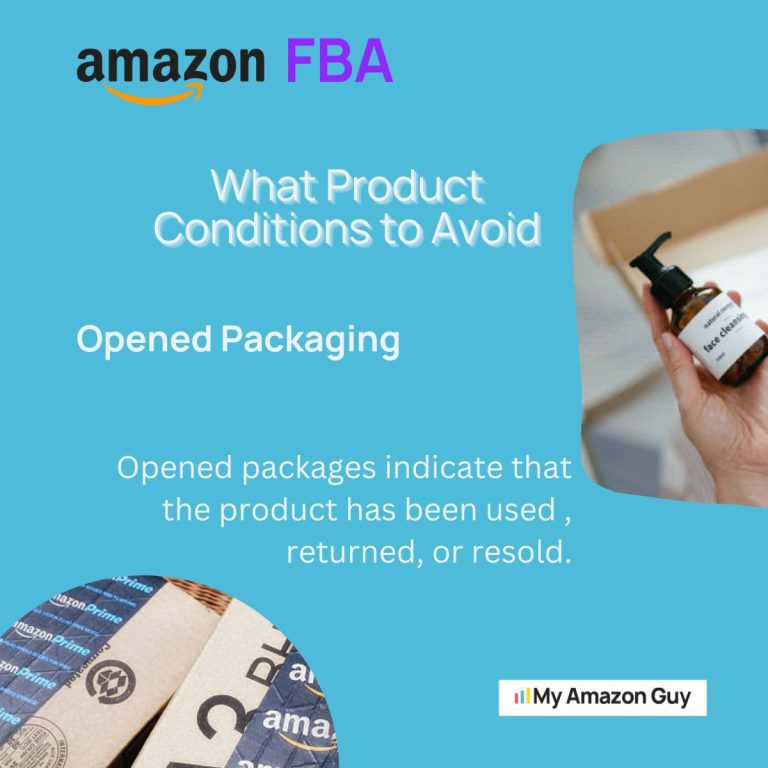
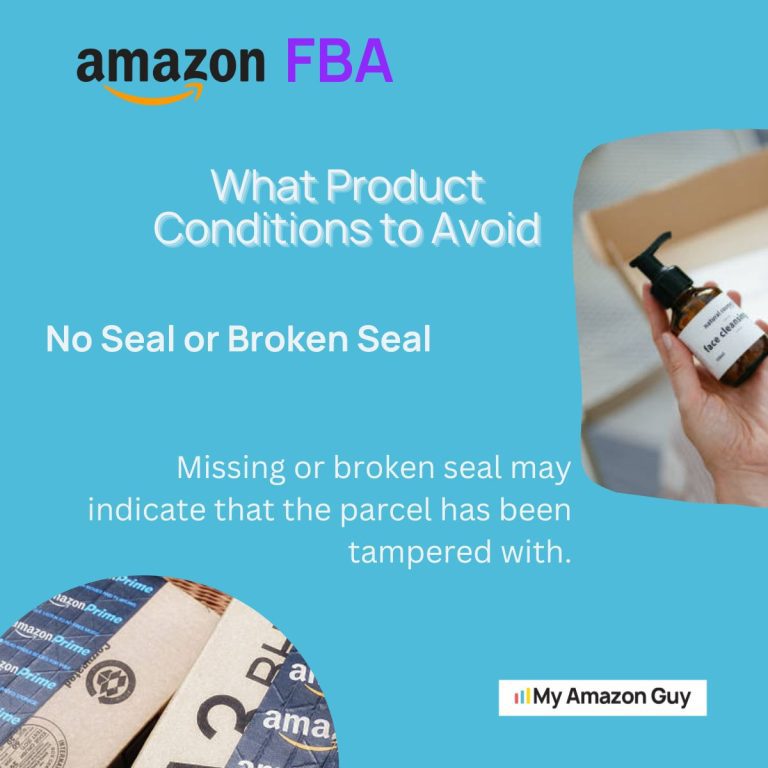


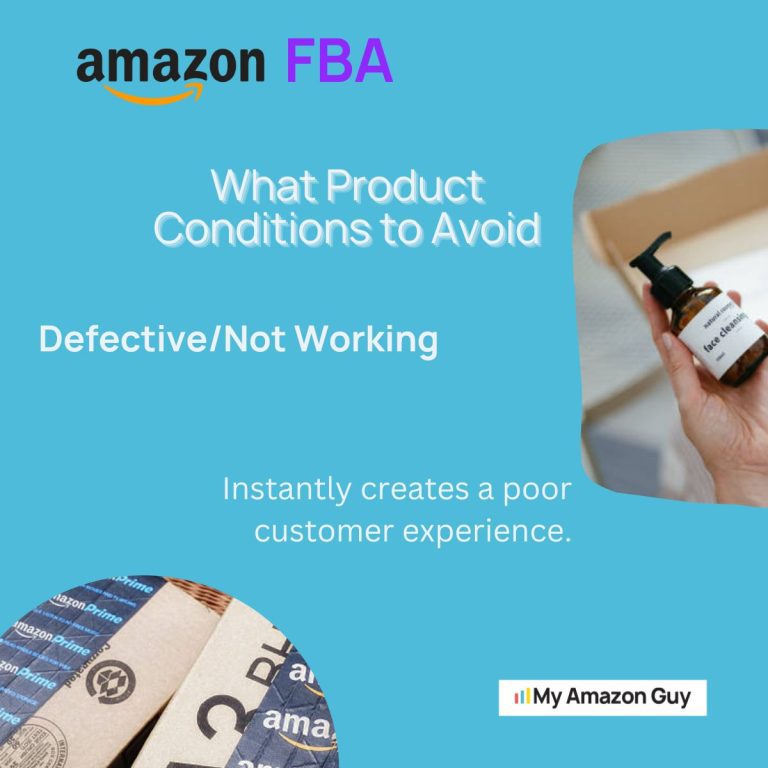

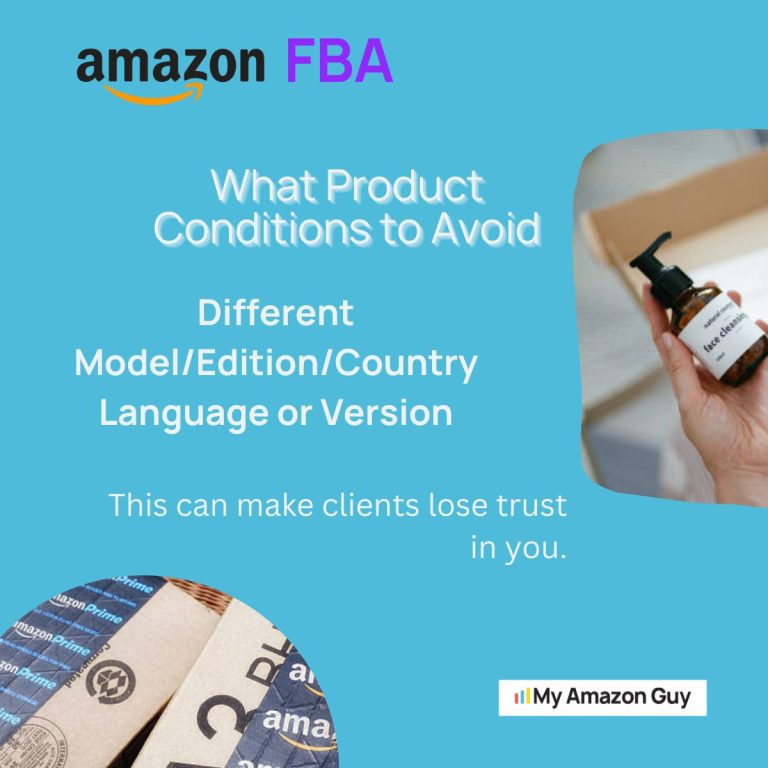
How Do I Prevent Product Condition Issues
To prevent product condition issues on Amazon, consider these:
- Accurate product descriptions: Provide clear and accurate descriptions of your products, including any potential defects or wear and tear. Transparency in your listings can help manage customer expectations and reduce the chances of condition-related issues.
- Quality control: Implement stringent quality control processes to ensure that the products you send to Amazon FBA are in the expected condition. This can include thorough inspections, testing, and packaging checks to avoid any damage during transportation.
- Proper packaging: Use appropriate packaging materials to protect your products during shipping and handling. This can include bubble wrap, padded envelopes, or sturdy boxes. Make sure your packaging is secure and provides sufficient cushioning to prevent damage.
- Storage conditions: Store your products in a suitable environment that minimizes the risk of damage. This includes controlling temperature, humidity, and exposure to elements that could impact the condition of your products.
- Regular inventory checks: Conduct regular inventory checks to ensure that your products are still in the expected condition. This can help identify and address any issues promptly, such as damaged or expired items.
- Customer feedback and returns: Pay attention to customer feedback and address any concerns promptly. If a customer reports an issue with the condition of a product, take it seriously and work towards resolving the problem. Offer returns or replacements when necessary to maintain customer satisfaction.
- Communication with Amazon: If you encounter condition-related issues, communicate with Amazon Seller Support to address the problem. Provide any necessary documentation or evidence to support your case and work towards a resolution.
Amazon FBA Product Eligibility: Hazardous Materials
What Is HazMat According To Amazon
According to Amazon, hazmat refers to hazardous materials that have the potential to cause harm to people, property, or the environment. Amazon has specific guidelines and restrictions in place for the sale and handling of hazmat products on their platform.
Amazon’s definition of hazmat includes substances such as:
- Flammable materials: These are substances that can catch fire easily, such as flammable liquids, gases, or solids.
- Aerosols: Products packaged under pressure and containing propellants are considered hazmat by Amazon. Examples include spray paints, air fresheners, or certain household cleaners.
- Corrosives: Substances that can cause damage to living tissues or other materials through chemical action fall under the hazmat category. This includes acids, bases, and certain cleaning chemicals.
- Batteries: Certain types of batteries, such as lithium batteries, are considered hazmat due to their potential for fire hazards or other safety risks.
- Other hazardous materials: Amazon’s hazmat definition may also include items such as certain chemicals, pesticides, or other substances that pose health or safety risks.
Here are a couple of HazMat videos from My Amazon Guy that you can watch to learn more.
Amazon FBA Product Eligibility: Packaging and Labeling Requirements
When it comes to packaging and labeling requirements for Amazon FBA products, there are specific guidelines that sellers must follow. These requirements help ensure that products are properly identified, protected, and compliant with Amazon’s standards. Here are some key points to consider:
- Loose Products:
– Loose products should be securely packaged to prevent damage during transit. Consider using appropriate cushioning materials to protect the product.
- Sold as Set:
– If your product is sold as a set or bundle, ensure that all items are properly packaged together and clearly labeled as a set.
- Boxed Units:
– Boxed units should be properly sealed and labeled for easy identification. The packaging should be sturdy enough to protect the product during transit.
- Poly-bagged Units:
– Poly-bagged units should be sealed properly to prevent any leakage or damage. If the poly bag’s opening is larger than 5 inches by 5 inches, a suffocation warning label may be required.
- Bubble Wrap:
– Bubble wrap can be used as a protective layer for fragile items. Ensure that the bubble wrap is securely wrapped around the product and does not obstruct any important labeling or information.
- Over-boxing:
– Over-boxing refers to placing a product in an additional box for added protection. This can be done if the product’s original packaging is not sufficient to ensure safe transit.
- Hanger Removal:
– If your product has hangers, it may be necessary to remove them before packaging. This can help reduce the size and weight of the package and prevent potential damage during transit.
- Tape:
– Use appropriate packaging tape to secure the package and ensure it remains intact during shipping. Strong adhesive tape is recommended.
- Mattress Packaging Guidelines:
– Mattresses have specific packaging guidelines to protect them during transit. These guidelines may include vacuum-sealing, compression, and using appropriate materials to prevent damage.
- Case-packed Products:
– Case-packed products are products that are already packaged in larger cases for shipment. Ensure that the individual units within the case are properly labeled and meet Amazon’s packaging requirements.
- Expiration Dates:
– If your product has an expiration date, it should be clearly labeled and easily visible. This is particularly important for products such as food, supplements, or cosmetics.
- Marketing Materials:
– Additional marketing materials, such as inserts or promotional flyers, should not be included inside the package. Amazon’s guidelines prohibit including any materials that divert customers away from the Amazon platform.
- Safety:
– Ensure that your product packaging meets safety standards and complies with any relevant regulations. This includes using child-resistant packaging where necessary and providing appropriate warning labels if applicable.
For Packaging done right for FBA, watch this informative video from Steven.
Amazon FBA Product Eligibility: Certifications and Documentation
If you sell things on Amazon, you must follow all applicable laws, regulations, standards, and policies concerning those products and product listings.
- Children’s Product Certificate (CPC):
– For products intended for children, Amazon requires a Children’s Product Certificate (CPC) to demonstrate compliance with applicable safety regulations. The CPC should include information about the product, testing, and conformity assessment.
- General Certificate of Conformity (GCC):
– A General Certificate of Conformity (GCC) may be required for certain products to certify that they meet relevant safety standards and regulations. The GCC should include information about the product, applicable regulations, and the manufacturer’s or importer’s details.
- Test Reports from the Consumer Product Safety Commission (CPSC):
– In some cases, Amazon may require test reports from the Consumer Product Safety Commission (CPSC) to ensure that products comply with the relevant safety standards and regulations enforced by the CPSC.
- Test Reports from an ISO 17025 Accredited Laboratory:
– Amazon may require test reports from an ISO 17025 accredited laboratory to ensure that products meet specific quality and safety standards. ISO 17025 is an internationally recognized standard for testing and calibration laboratories.
- Compliance Documentation Completed by a Nationally Recognized Testing Laboratory (NRTL):
– For certain products, Amazon may require compliance documentation completed by a Nationally Recognized Testing Laboratory (NRTL). NRTLs are independent third-party organizations recognized by the Occupational Safety and Health Administration (OSHA) for testing and certifying products.
- Compliance Markings:
– Compliance markings, such as safety labels or symbols, may be required to indicate that a product meets specific safety or regulatory requirements. These markings should be clearly visible and adhere to applicable standards.
- Product Instructions and Manuals:
– Products should include clear and accurate instructions and manuals to guide customers on the proper use, assembly, or installation of the product. The instructions should be easy to understand and follow.
- Registration Cards:
– Amazon generally does not require registration cards for products. However, if your product includes a registration card, it should not be a requirement for customers to register the product in order to receive a warranty or other benefits.
- Tracking Labels:
– Amazon may require products to have tracking labels that provide information about the manufacturer or importer, batch or lot number, and other relevant details. These labels help in tracking and identifying products in case of recalls or other issues.
Level up your Amazon FBA Product Eligibility knowledge with this video playlist below.
Amazon FBA Product Eligibility: Expiration Dates
Amazon defines expiration-dated products as items that have a specific date after which they are no longer suitable for use or consumption. This can include perishable goods, food items, supplements, cosmetics, and other products with a limited shelf life.
Shelf-life Requirements:
Amazon requires expiration-dated products to have a sufficient remaining shelf life when they arrive at their fulfillment centers. The specific shelf-life requirements may vary depending on the product category, but typically, products should have a minimum of 90 days or more before their expiration date.
Here are some details from Amazon on Commonly Sold Goods And Their Shelf Life.
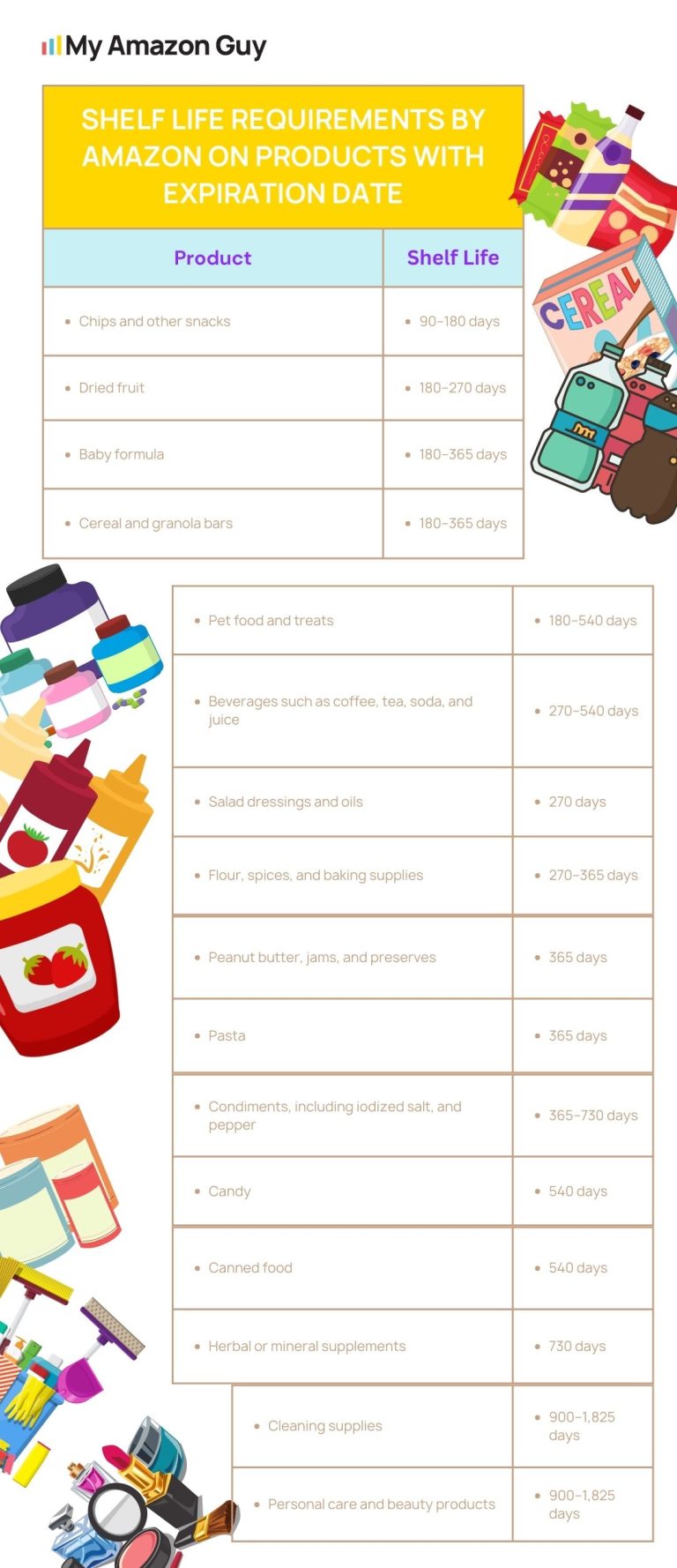
Labeling Products
Expiration-dated products must be clearly labeled with the expiration date or use-by date. This information should be easily visible and legible on the product packaging to ensure accuracy and transparency for customers.
Prepping Products with Expiration Date
Amazon may have specific requirements for prepping expiration-dated products to ensure their proper handling and storage at their fulfillment centers. This can include packaging guidelines, temperature control, and other measures to maintain product quality and safety.
Inventory Control at Amazon Fulfillment Centers
Amazon maintains strict inventory control processes to monitor and manage expiration-dated products in their fulfillment centers. This includes regularly monitoring the remaining shelf life of products, conducting periodic checks for expired items, and taking appropriate actions to remove or dispose of expired inventory.
Amazon FBA Product Eligibility: Product Variations
What products are eligible to have variations on Amazon
On Amazon, various product categories are eligible to have variations. While the specific eligibility criteria may vary, here are some common types of products that can have variations:
- Clothing and Accessories: Clothing items such as shirts, pants, dresses, and accessories like shoes, handbags, and belts can have variations based on attributes like size, color, and style.
- Electronics: Electronics products like smartphones, tablets, laptops, and headphones can have variations based on attributes like storage capacity, color, and model.
- Home and Kitchen: Home and kitchen products such as kitchen appliances, cookware sets, and furniture can have variations based on attributes like size, color, and style.
- Beauty and Personal Care: Beauty and personal care products like skincare items, makeup, and hair accessories can have variations based on attributes like size, color, and formulation.
- Toys and Games: Toys, games, and puzzles can have variations based on attributes like age group, size, color, and theme.
- Sports and Outdoors: Sports and outdoor products like athletic shoes, camping gear, and fitness equipment can have variations based on attributes like size, color, and style.
- Pet Supplies: Pet supplies such as pet food, collars, and toys can have variations based on attributes like size, flavor, and color.
Questions To Ask If I Can Offer A Product In Variations
If you are considering offering a product in variations, here are some questions you may want to ask yourself:
- Does the product have attributes that can be varied? Consider whether there are different options or characteristics of the product that customers may prefer, such as size, color, style, or flavor.
- Are there customer demands for different variations? Research customer preferences and market trends to determine if there is sufficient demand for the different variations of the product you are considering.
- Can you manage the inventory and logistics for each variation? Consider whether you have the capability to handle and track inventory for each variation separately. This includes ensuring that you can maintain adequate stock levels for each variation and effectively manage the logistics of fulfillment.
- Can you effectively communicate the variations to customers? Determine if you can clearly communicate and display the different variations of your product to customers. This includes having accurate and appealing product images and descriptions for each variation.
- Are there any legal or regulatory considerations for offering variations? Some product categories may have specific regulations or requirements for offering variations. Research any legal or regulatory considerations that may apply to your product.
- Can you effectively manage pricing and profitability? Consider whether you can set appropriate pricing for each variation, taking into account factors such as production costs, competition, and customer expectations. It’s important to ensure that offering variations will be financially viable and profitable for your business.
Amazon FBA Product Eligibility: Product Bundling
When it comes to product bundling on Amazon, there are certain requirements and guidelines to follow. Here are some key points to consider:
- Complementary Products: Amazon encourages bundling products that are complementary to each other, meaning they are related or used together. Bundling products that make sense to customers can enhance the shopping experience and increase sales.
- Unique ASIN: Bundled products must have a unique Amazon Standard Identification Number (ASIN). This means that if you are creating a new bundle, you will need to create a unique ASIN for that bundle. Bundles cannot use the ASINs of individual products within the bundle.
- Packaging: Bundled products should be physically packaged together. This means that the individual products must be combined, packaged, and presented as a single unit. The packaging should clearly indicate that it is a bundle and display the contents of the bundle.
- Product Information: The product detail page for the bundle should accurately describe the contents of the bundle, including the individual products included and their specifications. It’s important to provide clear and concise information to help customers understand what they are purchasing.
- Pricing: The price of the bundle should be competitive and offer value to customers. Sellers should consider the pricing of individual products when determining the pricing of the bundle. Amazon also recommends offering a discount or cost savings compared to purchasing the individual items separately.
- Product Images: The product images for the bundle should clearly show the bundled products and their packaging. High-quality images that accurately represent the bundle can help attract customers and improve conversion rates.
- Inventory Management: Sellers need to manage inventory for bundled products appropriately. Inventory should be tracked and managed at the bundle level to ensure accurate availability and prevent overselling.

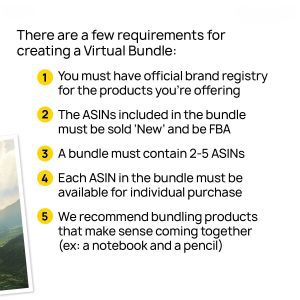
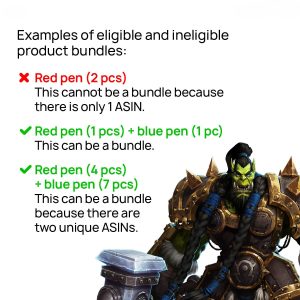

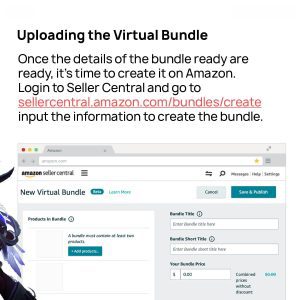



Amazon FBA Product Eligibility: Product Assembly
Here are some key points to consider when providing information on selling products that require assembly before use on Amazon FBA.
- Accurate Product Description: The product detail page should accurately describe the product, including the fact that assembly is required before use. Provide clear information about the assembly process, any tools or additional components needed, and estimated assembly time.
- Detailed Assembly Instructions: Sellers should provide detailed and easy-to-follow assembly instructions with the product. These instructions should be clear and concise, enabling customers to assemble the product correctly and safely. Including diagrams or videos can be helpful in guiding the assembly process.
- Packaging: The product should be packaged securely to protect its components during shipping and handling. The packaging should also include all necessary assembly components, such as screws, bolts, or other fasteners, as well as any required tools.
- Quality Control: Sellers should have effective quality control measures in place to ensure that the product and its components are of high quality and meet the required standards. This may involve inspecting and testing the product and its assembly components before it is listed for sale on Amazon.
- Compliance with Safety Standards: Sellers must ensure that the assembled product complies with all applicable safety standards and regulations. This includes meeting any specific requirements related to the type of product being assembled, such as electrical safety standards for electronic devices.
- Intellectual Property Rights: Sellers need to ensure that the product and its assembly instructions do not infringe on any intellectual property rights, including trademarks, copyrights, or patents. Proper research and clearance should be conducted to avoid any potential legal issues.
- Customer Support: Sellers should be prepared to provide adequate customer support, including assistance with assembly-related inquiries or issues. Promptly responding to customer questions or concerns can help enhance the overall customer experience.
Amazon FBA Product Eligibility: Permits and Licenses
When selling on Amazon FBA, there are several permits and licenses that may be commonly required, depending on the nature of the products being sold. Here are some examples:
- Business License: Sellers typically need a general business license, which is a basic requirement to operate any business legally.
- Sales Tax Permit: If your business has a sales tax nexus in certain states or jurisdictions, you may need to obtain a sales tax permit to collect and remit sales tax to the appropriate tax authorities.
- Brand Registry: If you have your own private label brand, enrolling in Amazon’s Brand Registry program can help protect your brand and intellectual property rights.
- Category-specific Permits: Depending on the product category, there may be specific permits or certifications required. For instance, selling food products may require a food handling license or permits for selling certain regulated items.
- FDA Compliance: If you sell products in categories regulated by the U.S. Food and Drug Administration (FDA), such as dietary supplements or cosmetics, you may need to comply with specific FDA regulations and obtain relevant permits or certifications.
- Trademarks and Copyrights: It’s important to ensure you have the necessary rights or permissions to sell products that are protected by trademarks, copyrights, or patents. Obtaining appropriate licenses or permissions is crucial to avoid intellectual property infringements.
Best Practices When Dealing With Amazon FBA Product Eligibility
When it comes to product eligibility for Amazon FBA, there are several best practices to follow to ensure a smooth experience:
- Research Category Restrictions: Familiarize yourself with Amazon’s category restrictions and requirements. Certain product categories may have specific guidelines or limitations. Make sure your product fits into a category that is eligible for FBA.
- Check Hazmat Requirements: If your product contains hazardous materials, such as flammable or pressurized substances, ensure that it complies with Amazon’s hazmat requirements. This includes proper packaging, labeling, and documentation.
- Optimize Product Listings: Create accurate and detailed product listings that clearly describe your product’s features, specifications, and benefits. This helps ensure that your product is properly classified and eligible for FBA.
- Provide Clear Product Images: High-quality product images are crucial for showcasing your product and attracting potential buyers. Follow Amazon’s image guidelines and provide images that accurately represent your product.
- Follow Packaging Guidelines: Adhere to Amazon’s packaging guidelines to ensure that your product is packaged securely and can withstand the rigors of the fulfillment process. Proper packaging helps prevent damage during storage and transportation.
- Monitor Inventory Levels: Regularly monitor your inventory levels to avoid stockouts or overselling. Maintaining adequate stock ensures that your products remain eligible for FBA and allows for timely order fulfillment.
- Stay Updated on Policy Changes: Amazon frequently updates its policies and requirements. Stay informed about any changes or updates related to product eligibility to ensure compliance and avoid any disruptions to your FBA operations.
- Seek Guidance from Experts: If you have specific questions or concerns about product eligibility, consider seeking guidance from experts or professionals who are experienced in selling on Amazon FBA. They can provide valuable insights and help you navigate any challenges.
Conclusion
Familiarizing yourself with Amazon FBA product eligibility unlocks opportunities for your business. Understanding specific requirements and restrictions allows for informed decisions, enabling you to navigate the competitive Amazon landscape confidently.



